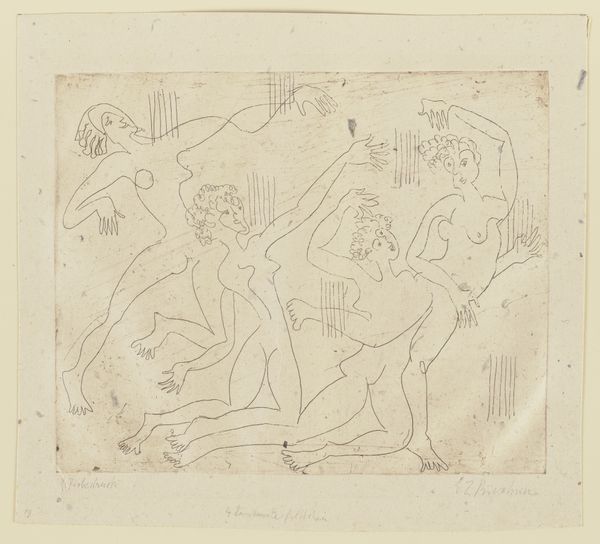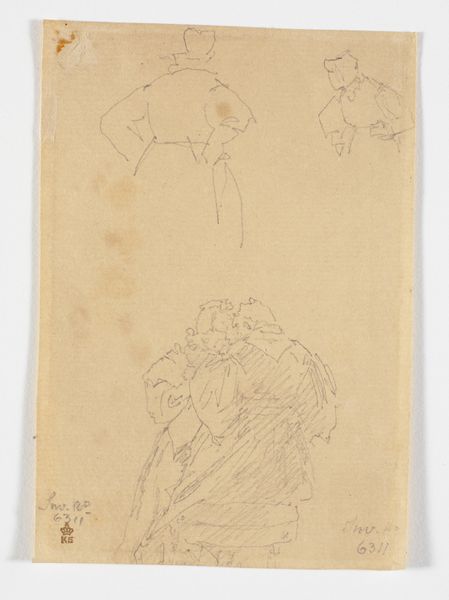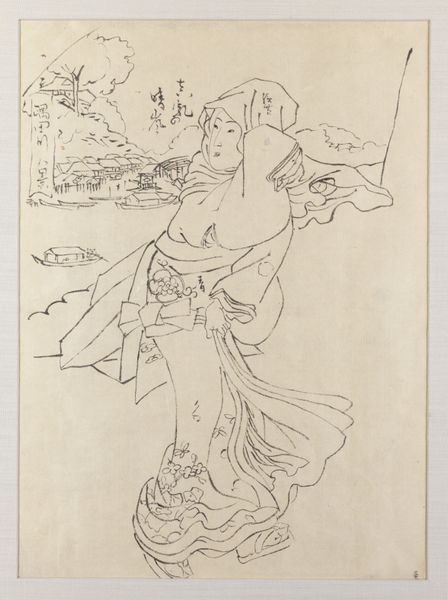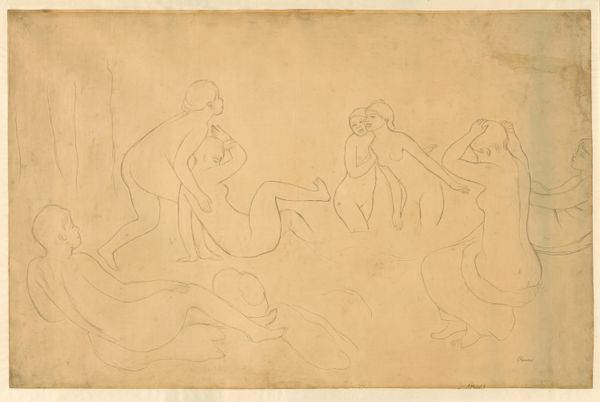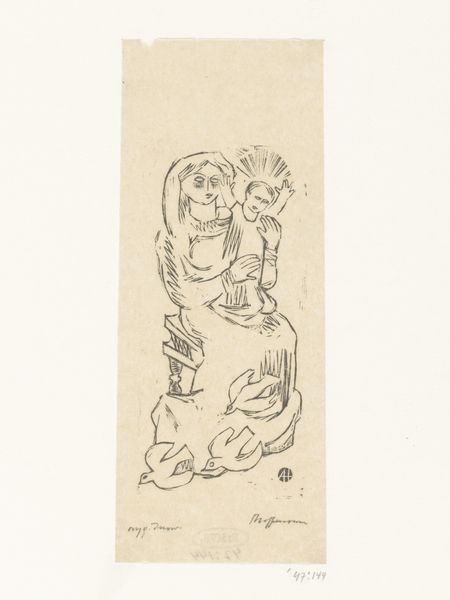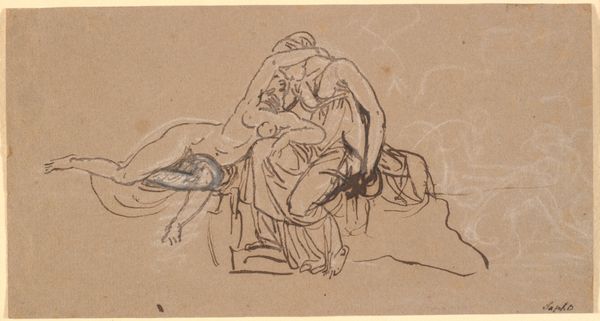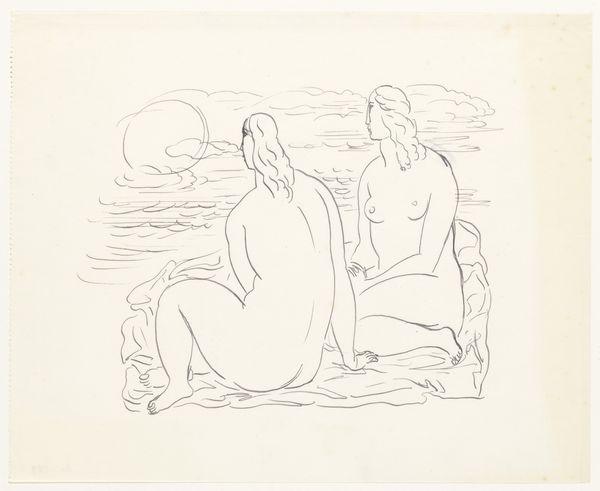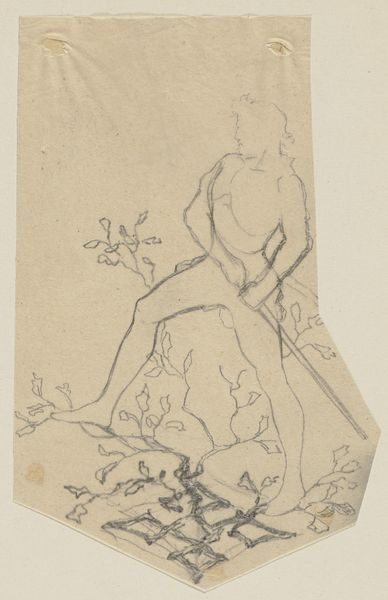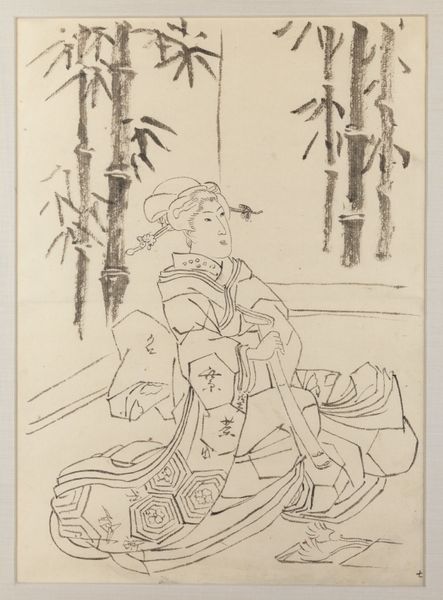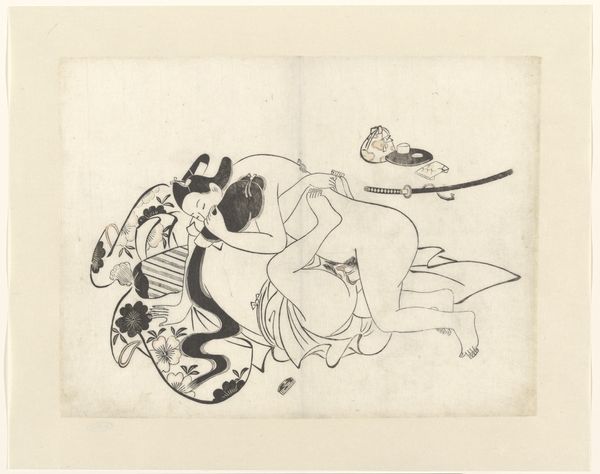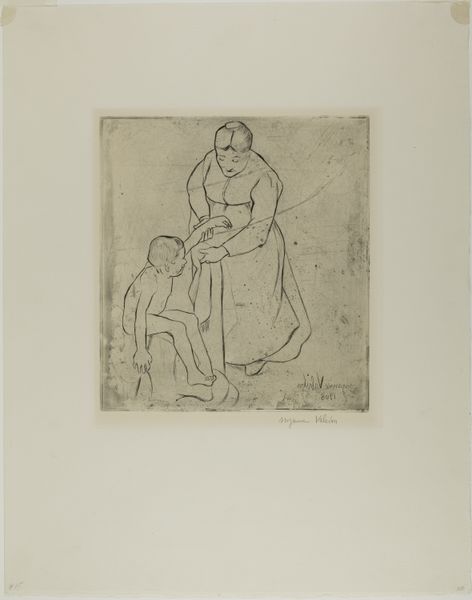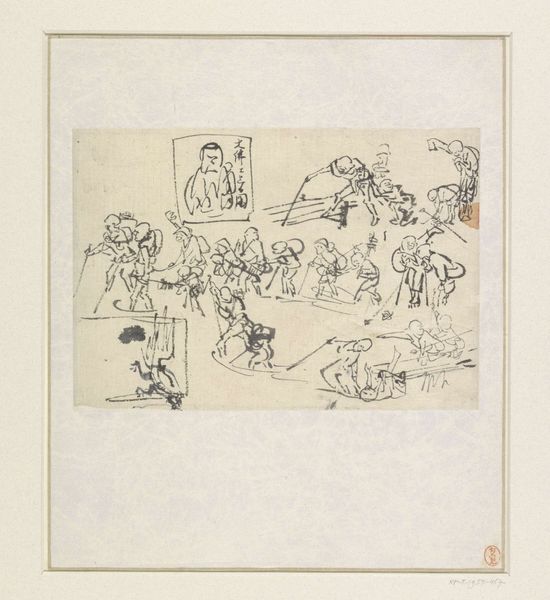![Seated Tahitian Women (related to the painting Nafea faa ipoipo [When Will You Marry?]) and Other Sketches by Paul Gauguin](/_next/image?url=https%3A%2F%2Fd2w8kbdekdi1gv.cloudfront.net%2FeyJidWNrZXQiOiAiYXJ0ZXJhLWltYWdlcy1idWNrZXQiLCAia2V5IjogImFydHdvcmtzLzE1MjBkOGM4LTc3YmEtNDU5My04NzQ0LWZmZTU3ZTkxNjRjNy8xNTIwZDhjOC03N2JhLTQ1OTMtODc0NC1mZmU1N2U5MTY0YzdfZnVsbC5qcGciLCAiZWRpdHMiOiB7InJlc2l6ZSI6IHsid2lkdGgiOiAxOTIwLCAiaGVpZ2h0IjogMTkyMCwgImZpdCI6ICJpbnNpZGUifX19&w=3840&q=75)
Seated Tahitian Women (related to the painting Nafea faa ipoipo [When Will You Marry?]) and Other Sketches 1891 - 1893
0:00
0:00
drawing, print, paper, graphite
#
portrait
#
drawing
# print
#
asian-art
#
paper
#
graphite
#
post-impressionism
#
nude
Dimensions: 248 × 200 mm
Copyright: Public Domain
Curator: On display here, we have "Seated Tahitian Women (related to the painting Nafea faa ipoipo [When Will You Marry?]) and Other Sketches," crafted by Paul Gauguin between 1891 and 1893. This piece consists of graphite on paper. Editor: My immediate reaction is to the simplicity and rawness of the image. The lines are so spare, yet they effectively capture the essence of these women in repose. Curator: Precisely. Gauguin was deeply interested in line and form, particularly after moving to Tahiti. These sketches represent a distillation of his subject matter, focusing on the basic elements of composition. The formal construction emphasizes the weight and volume of the figures, doesn’t it? Editor: Indeed, and one cannot ignore the colonial context. How does this European gaze shape the image, both reinforcing and perhaps unintentionally subverting the exoticized view of Tahitian women during this period? There's a certain stillness and passivity portrayed, which is, of course, loaded with historical meaning. Curator: Your point about colonial perspectives is critical. Notice the treatment of space; there is little depth. Instead, the women are flattened against the surface of the paper, reminiscent of Japanese prints, influencing the flatness and two-dimensionality of Post-Impressionist works like this. Editor: That stylistic choice further removes the women from a recognizable, tangible environment, almost placing them in an ambiguous symbolic realm, don't you think? The sketches become more about Gauguin's ideas than any literal depiction of reality. It's hard to reconcile beauty and the artist’s role within a larger oppressive structure. Curator: A very astute observation. Through the simplification of form and the conscious manipulation of space, the drawing points towards a rejection of Western artistic conventions in favor of a more direct expression of feeling, a sentiment at the core of Gauguin's practice. Editor: Thinking about this piece forces us to grapple with the uncomfortable questions around cultural appropriation and representation. While formally interesting, we can’t ignore the socio-political climate of the time and the way in which it taints the visual language used here. Curator: Absolutely. Examining the form invites us to scrutinize those structures as they influenced and, perhaps continue to influence the Western view of the "other" through such images.
Comments
No comments
Be the first to comment and join the conversation on the ultimate creative platform.
